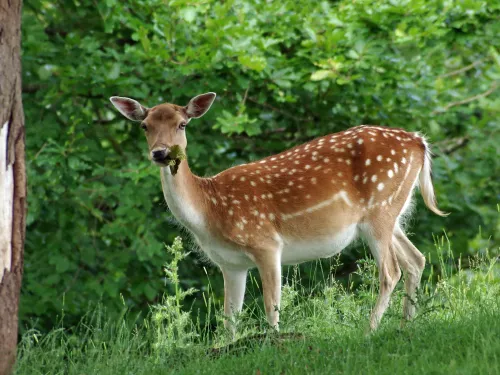European seabass
Seabass is a seafood favourite, appearing on menus throughout the UK. But it's in trouble in UK seas, with much of the seabass we eat imported from European fish farms.
Seabass is a seafood favourite, appearing on menus throughout the UK. But it's in trouble in UK seas, with much of the seabass we eat imported from European fish farms.
The distinctive sight of a spoonbill is becoming increasingly common in the east and southwest of England, with colonies of breeding birds now established.
Eyebright has small, white flowers with purple veins and yellow centres. It likes short grasslands, from clifftops to heaths, and is one of a number of species and hybrids that are hard to tell apart.
The large eyed ladybird is unmistakeable: it is our only ladybird with yellow rings around its black spots. Ladybirds are beneficial insects, managing garden pests - encourage them by putting up a bug box.
A small and delicate plant of chalk grasslands, Fairy flax can be seen in bloom from May to September - look out for its nodding, white flowers.

Although introduced by the Normans, the fallow deer has been here so long that it is considered naturalised. Look out for groups of white-spotted deer in woodland glades.
A fluffy-looking grass of rough grassland, roadside verges and disturbed ground, False oat-grass is very familiar and often overlooked; in fact, it can help to stabilise dunes and shelter small mammals.

Fat hen is a persistent 'weed' of fields and gardens, verges and hedgerows. But, like many of our weed species, it is a good food source for birds and insects.
A pale member of the violet family sometimes known as ‘milk violet’, the fen violet has a delicate and unassuming appearance. A real specialist of the wetland habitat, this species has seen a massive decline in population due to habitat loss and draining of wetland habitats.
Fennel has feathery leaves and open, umbels of yellow flowers. It was probably introduced by the Romans for culinary use, and is now a naturalised species of verges, waste ground and sand dunes.
A creeping and climbing plant of cultivated ground, Field Bindweed can become a pest in places as it stops other plants from growing. It has creamy, sometimes striped, large flowers, and arrow-shaped leaves.
Once widespread, this attractive plant has declined as a result of modern agricultural practices and is now only found in four sites in South East England.